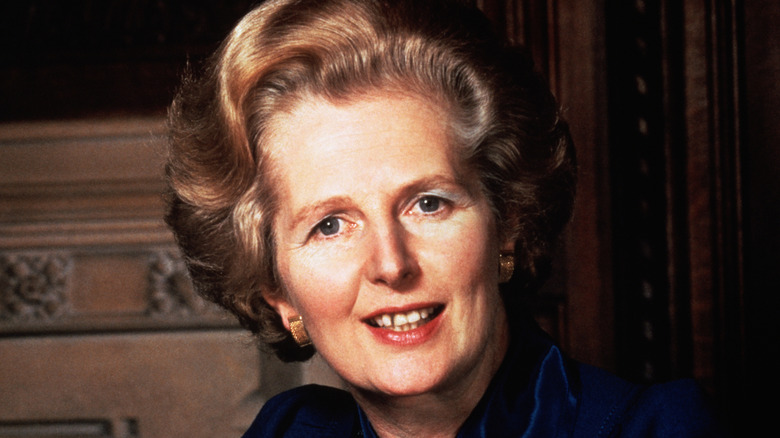Did Margaret Thatcher Really Help Invent Soft Serve Ice Cream?
Before Margaret Thatcher became Europe's first female prime minister, she was a research chemist — and one of her earliest projects is often cited as having a pretty sweet impact. But did she invent soft serve ice cream? Not quite. In fact, soft serve as we know it originated in the U.S. years before Thatcher entered the picture.
In 1934, New York ice cream vendor Tom Carvel made a serendipitous discovery when a flat tire forced him to sell melting ice cream from a roadside stand — and customers loved it. Realizing the potential of the smoother texture, Carvel coined a new product. A few years later, in 1938, Illinois dairy workers J.F. McCullough and his son Alex crafted their own proprietary soft serve recipe, leading to the opening of the first Dairy Queen in 1940.
Meanwhile, across the Atlantic, Thatcher was beginning her own career. After graduating from Oxford University in the 1940s, she took a job as a chemist at J. Lyons & Co., a British food manufacturer known for its innovations in processed foods. There, she joined a team working on food emulsifiers and aeration — and likely contributed to refining the aerated ice cream formulas gaining popularity in post-war Britain. So, while Thatcher didn't singlehandedly invent soft serve, her work helped improve and adapt it. By experimenting with overrun — a process that expands the ice cream's volume by flowing air into the mixture as it freezes — the team helped make soft serve fluffier, more affordable to produce, and easier to dispense from machines.
The Iron Lady's soft-serve contributions are a mystery
Thanks to all of these developments, soft serve emerged as a lighter alternative to traditional hard-packed ice cream. Although Margaret Thatcher's exact level of involvement in the evolution of soft serve is debated — and she is not individually credited on any patent — she was part of a scientific effort that helped make it more scalable and consistent. Claims that she "invented" soft serve have circulated widely, but available evidence doesn't support such a definitive title. Historians and journalists alike have outright dismissed the assertion as a myth. Still, it's fair to say Thatcher had a hand in shaping a more cost-effective version of the frozen treat that millions would go on to enjoy.
By the 1950s, soft serve had become a staple in Britain, with the launch of the Mr. Whippy brand and its fleet of pastel-colored ice cream vans. The swirled sensation quickly captured the hearts of the public, becoming a symbol of nostalgia. Today, soft serve continues to delight consumers. You can find versions of the frozen dessert at McDonald's, Chick-fil-A, and Sonic Drive-In. Mom-and-pop parlors and big-box retailers like Costco and Sam's Club offer soft serve as well.
"The Iron Lady" eventually traded lab coats for power suits, but her analytical training never left her. While she's best remembered for her economic policies and unyielding leadership, her early connection to soft serve remains a curious footnote. Thatcher's alleged role in the history of soft serve ice cream is an example of how notable figures can leave unexpected — and delicious — legacies.

